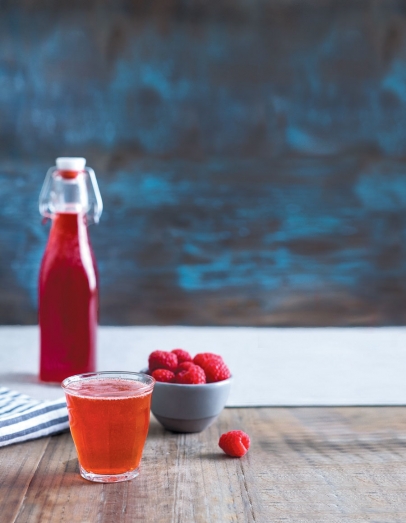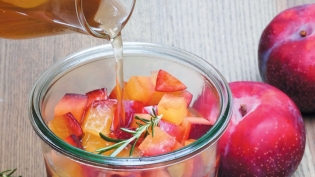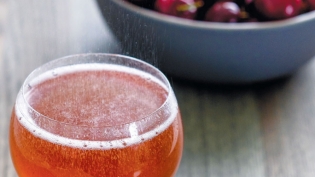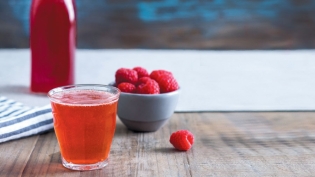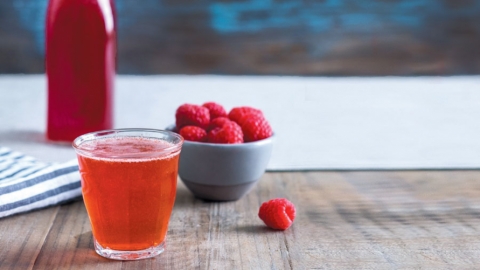Summer Sipper
Not your garden-variety shrubs
Shrubs, or drinking vinegars, are a fun way to get creative with all kinds of summer produce, from Ventura County berries to local peaches, plums and cherries. Even better, they’re easy to make and serve to folks of all ages.
Shrubs have become so popular of late that it might seem as if they were a phenomenon of the modern cocktail bar. But the truth is, people have been imbibing vinegar for thousands of years. To understand why this may have started, it might help to know how vinegar is made. Vinegar, at its core, is soured alcohol. Although the word comes from the French vin aigre, or “sour wine,” vinegar can be made from any type of alcohol, including wine, beer and cider. When the alcohol is exposed to oxygen it ferments, and Acetobacter bacteria transform it into acetic acid—that’s what gives vinegar its sour taste.
It’s easy to imagine that early drinking and cooking vinegars were simply accidents of wine gone bad. Instead of discarding this tart liquid, though, people came to appreciate its unique qualities. Because of its ability to inhibit the growth of dangerous microbes, vinegar could be used as an antiseptic to make water safe to drink, as well as to preserve precious herbs, fruits and vegetables. The acetic acid in vinegar can help the body absorb essential minerals—such as calcium—from the foods we eat, and its sour flavor can stimulate saliva production and slake thirst. Vinegar can also extract aromatic compounds and medicinal constituents, such as minerals, from plants.
Folks have been drinking vinegar to reap its health benefits for thousands of years. Around 4000 BCE, the Babylonians fortified their water with vinegar made from date and raisin wines. In ancient China, vinegar made from rice wine was used to promote digestion. Later, the Romans infused vinegar with herbs and mixed it with water to make a beverage called posca, which was served to thirsty soldiers. The relationship between vinegar and warriors also existed in feudal Japan, where samurai drank vinegar to prepare for battle.
Of course, not everyone likes vinegar neat. Our ancestors also mixed vinegar with honey, sugar, molasses and other sweeteners to make healthful syrups and drinks more palatable. The oxymel, which literally means “acid honey,” has been around since antiquity, when Hippocrates prescribed vinegar and honey syrup as an expectorant to ease wet, congested coughs and other ailments.
The shrub takes its name from an Arabic syrup, or sharbât. In contrast to most syrups, however, shrubs are distinctly sour and tangy. They usually contain fruit, and, at one time, were an effective way to preserve the bounty of the summer harvest. American housekeeping manuals from the 19th and early 20th centuries are filled with recipes for raspberry, cherry and other varieties of shrubs—drinks that became particularly popular during the Temperance movement because they were nonalcoholic yet zippy and refreshing.
Though several methods exist for making shrubs, the most common process involves creating a fruit-flavored vinegar and sweetening it with sugar. The easiest way to serve a shrub is to simply mix it with sparkling water to make a tangy soda.
CRAFTING VINEGAR DRINKS
Always infuse vinegars in very clean containers—at the very least, make sure they’ve been thoroughly washed with hot, soapy water. You can also sanitize or sterilize them to be extra-safe, which is an especially good idea if you’re using fresh fruit or herbs. Fresh ingredients should always be completely submerged in the vinegar to prevent spoilage: If they have a tendency to float, shaking the jar daily will ensure that they soak evenly.
Most drinking vinegars can last for a year or even longer in the refrigerator, especially if you sterilize the container. That said, use your own judgment. If the vinegar is bubbling or if it looks moldy, cloudy or slimy, throw it out.
Kitchen Tip: Vinegar can corrode metal. If you’re using a metal lid with your infusing jar, place a piece of plastic wrap, waxed paper or parchment paper between the jar and the lid to prevent corrosion.


